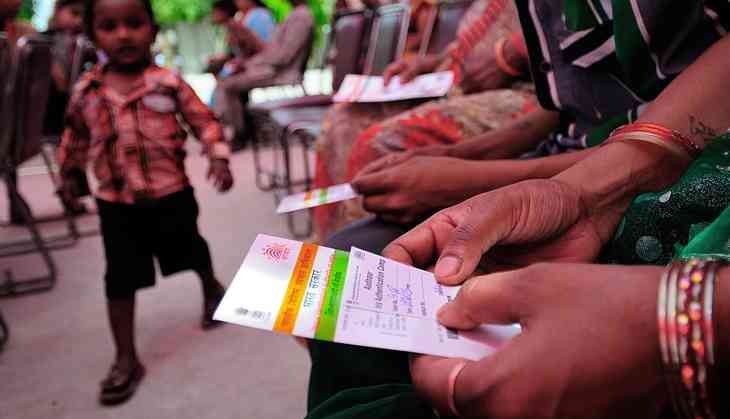SC refers Aadhaar 'privacy' matter to 9-judge bench: why that may just compound the confusion

The Aadhaar card issue in India took a curious turn on 18 July after a five-judge bench of the Supreme Court headed by Chief Justice of India J S Khehar ordered the formation of a new nine-judge bench to separately decide on whether it infringes upon the privacy of its citizens, while leaving the “rest of the issues” to an “appropriate” bench.
The rest of the issues include linking Aadhaar with the Permanent Account Number (PAN) card for income tax and other taxation purposes, social welfare schemes, subsidies like cooking gas, bank accounts etc. should be decided by a separate “appropriate” bench.
A fundamental right?
The main issue that lies before the SC is whether Aadhaar infringes on the privacy of a citizen, especially when iris scans and finger prints are taken before the card is issued to a citizen.
Primarily, the question is of whether privacy is a fundamental right.
So far, there have been conflicting arguments. The Centre has contended that privacy “is a common law right”, whereas various private petitioners have countered it on the basis that the United Nations (UN) declaration holds it (privacy) as an “inalienable human right”.
Further there have been a slew of petitions challenging the linking of Aadhaar to IT returns, bank accounts (KYC, or Know Your Customer) subsidies, various social welfare schemes for the have-nots and even for a mobile phone sim card. These issues was separately heard by two benches before they got transferred before the five-judge bench.
Now a nine-judge bench will hear the case on the aspect of “privacy”.
However, two decisions of the apex court, one in 1950 and the other in 1962, held that privacy was not a fundamental right. The Central government relied on these two decisions to buttress the point that linking Aadhaar card to various schemes would not violate the fundamental right of a citizen.
The confusion
While the nine-judge bench would begin its hearings from 19 July on a regular basis, the hearings for the “appropriate” bench have not been yet fixed.
However, the confusion that would be compounded is that if the nine-judge bench came to the conclusion that Aadhaar infringes upon the privacy of a citizen and/or privacy is a fundamental right in consonance with the UN definition, then whatever the decision of any other bench would be, would not be binding, as a bench of smaller strength cannot overrule a bench of larger strength.
At the same time, if the larger bench decides that privacy is not a fundamental right, then any other bench could decide that the “other issues” related to Aadhaar card raised by a batch of petitioners - about 20 including a retired judge who challenged the Aadhaar card itself - are no longer necessary to debate, making 'the issues' a requirement.
An 'unresolved contradiction'
The order states that it has become essential for the Supreme Court to determine “whether there is any fundamental right of privacy under the Indian Constitution”.
In 1950, an eight-Judge bench of the Supreme Court in MP Sharma Vs Satish Chandra and in 1962, in Kharak Singh Vs State of UP, a 6-judge bench decided “there is no such fundamental right”.
Referring to this, the SC today said that the issue “deserves” to be placed before the nine-judge Constitution Bench and listed the matter for further hearings from tomorrow.
In fact, this five-judge bench was formed after a three-judge bench presided by Justice Chelameswar vide its order on 11 August 2015 observed that the case on hand “raise far-reaching questions of importance involving interpretation of the Constitution”. That bench had then said that there was an “unresolved contradiction in law” settled by the Supreme Court itself (in its 1950 and 62 decisions).
The “unresolved contradiction” is that there is no separate provision for privacy in the fundamental rights chapter of the Constitution like the right to life, equality, equal application of law, right to freedom of speech and expression etc. But right to life is itself is expanded by various judicial pronouncements to include right to life with dignity, so much so that even a dead body has its dignity and should be buried or burnt with due respect.
Edited by Aleesha Matharu
First published: 18 July 2017, 19:35 IST
